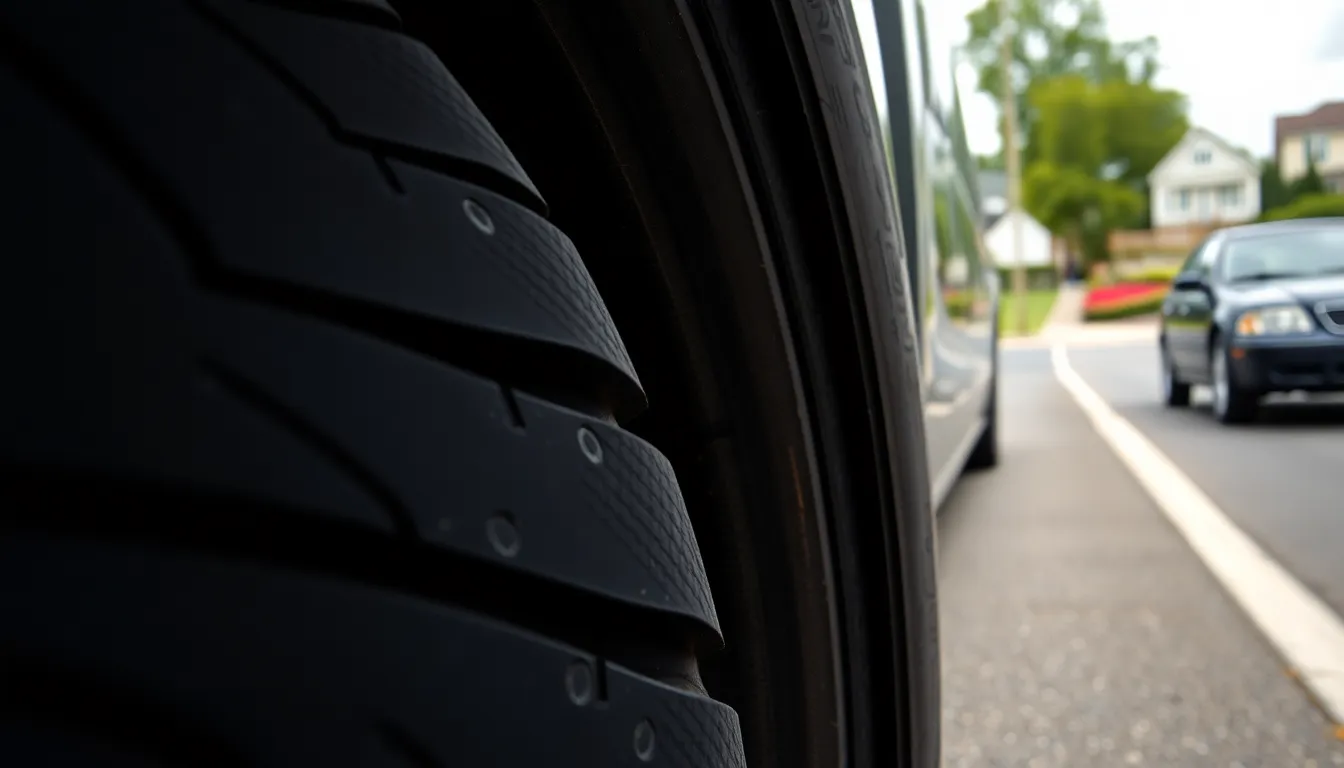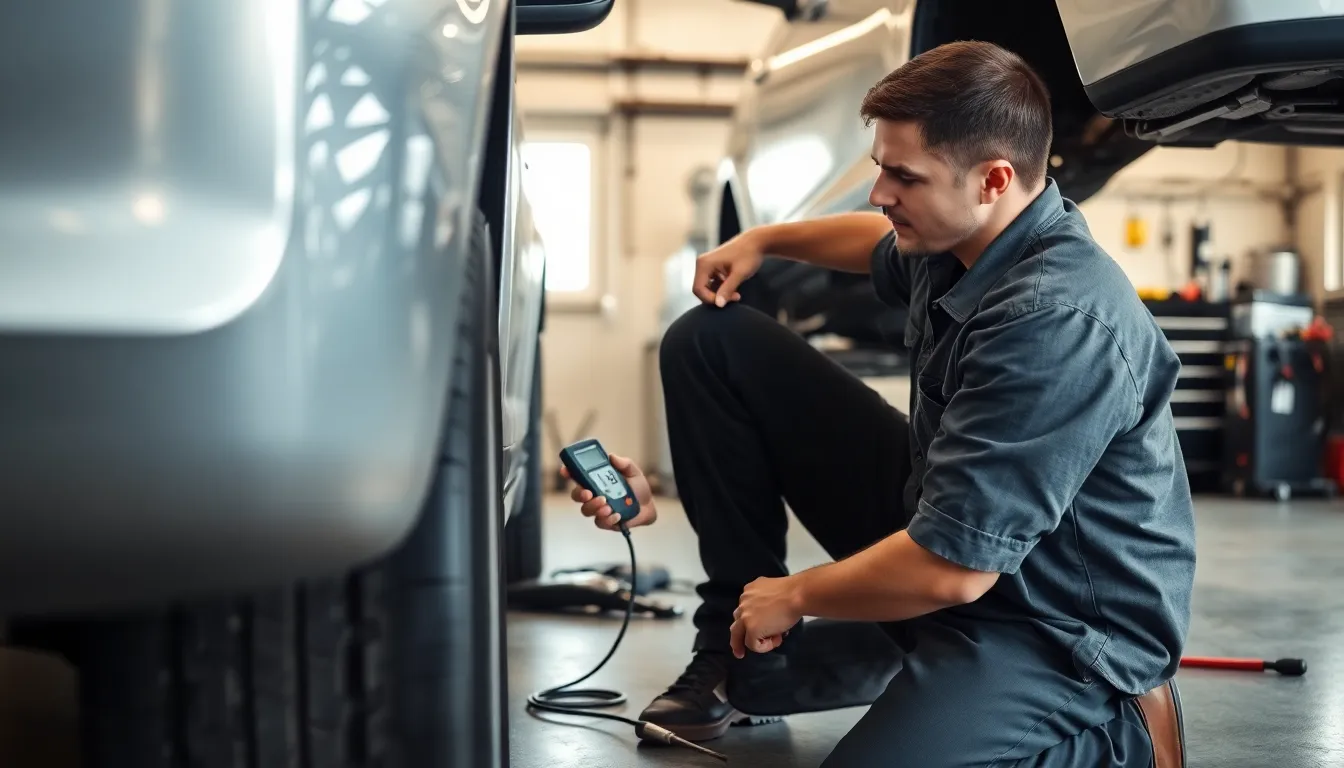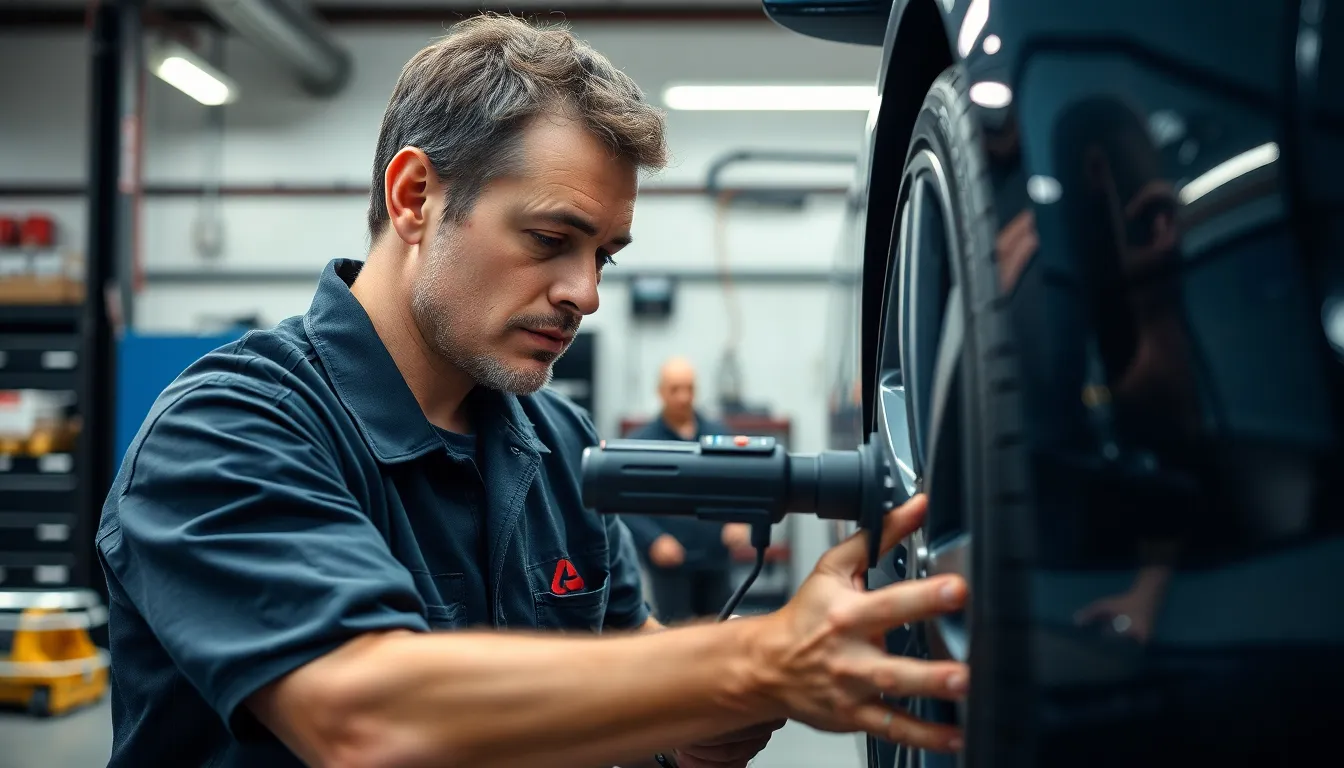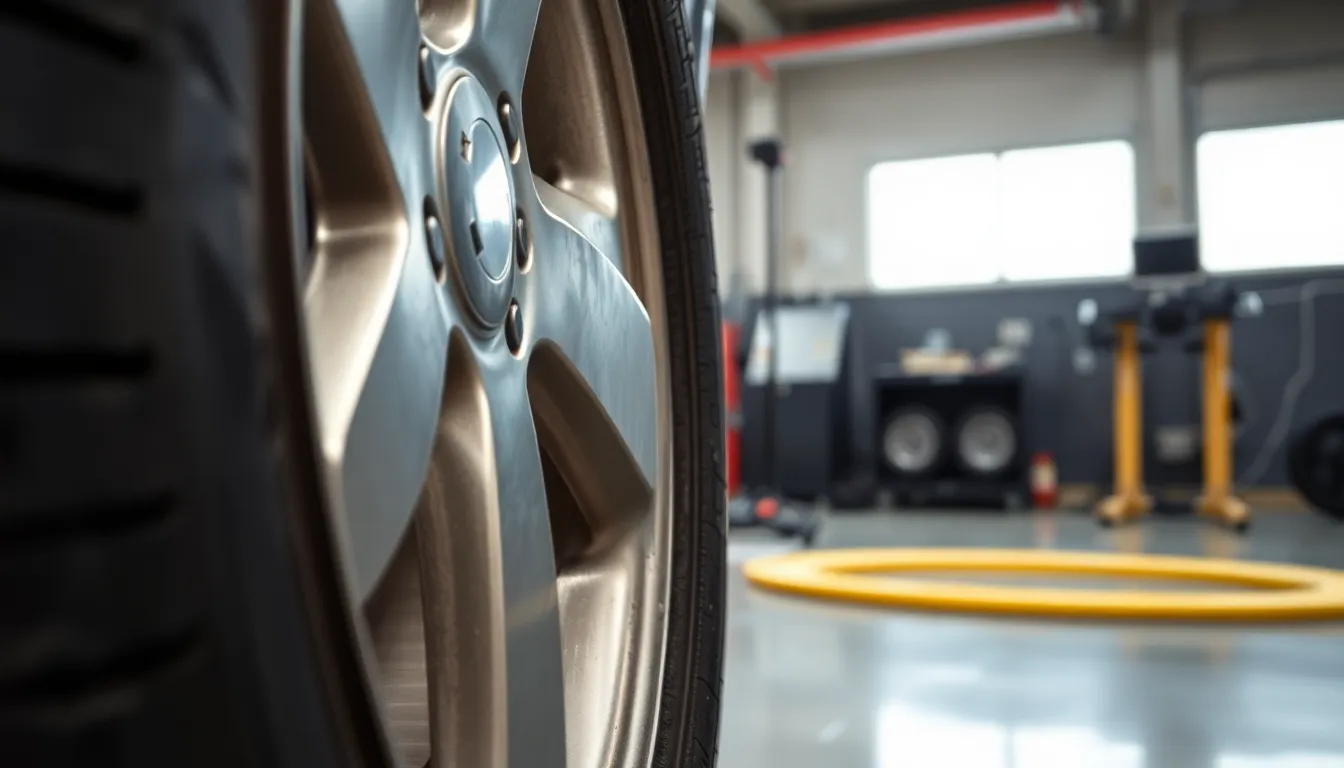Inner tire wear can drain your wallet faster than you’d think. We’ve all been there – you’re driving along when you notice that telltale vibration or your car pulling to one side. When you finally check your tires you discover the inside edges are completely worn down while the outside looks nearly new.
This frustrating problem affects millions of drivers every year and it’s not just about replacing expensive tires. Inner tire wear creates serious safety hazards that put you and your family at risk. The good news? Most inner tire wear issues are completely preventable and many can be fixed with simple adjustments.
We’ll walk you through the exact steps to diagnose what’s causing your inner tire wear and show you proven methods to fix it permanently. Whether it’s alignment issues camber problems or worn suspension components we’ve got the answers that’ll save you hundreds of dollars and keep you safe on the road.
What Causes Inner Tire Wear
Inner tire wear stems from three primary mechanical issues that affect how your tires contact the road surface. Understanding these root causes helps us identify and address the problem before it leads to premature tire replacement.
Wheel Alignment Issues
Wheel alignment problems represent the most common cause of inner tire wear patterns. Toe-in misalignment occurs when the front edges of your tires point inward more than the rear edges, creating excessive friction on the inner tread surface. Camber misalignment tilts the tire at an incorrect angle, causing the inner edge to bear more weight than the outer edge during normal driving conditions.
Misaligned wheels develop from hitting potholes, curbs, or speed bumps at high speeds. Road construction zones with uneven surfaces contribute to alignment shifts over time. Factory alignment specifications vary between vehicle models, but most passenger cars require toe settings within 0.06 degrees and camber angles between -0.5 and +0.5 degrees for optimal tire wear.
Suspension Problems
Worn suspension components create irregular tire contact patterns that accelerate inner edge deterioration. Ball joints lose their tight fit after 70,000 to 150,000 miles, allowing the wheel to wobble and change its angle during driving. Control arm bushings deteriorate from road salt and temperature fluctuations, permitting unwanted wheel movement that concentrates wear on exact tire areas.
Strut assemblies affect camber angles when internal components wear out or leak hydraulic fluid. MacPherson strut systems commonly found in front-wheel-drive vehicles experience bearing plate wear that alters wheel positioning. Coil springs weaken over time and reduce ride height, which changes suspension geometry and tire contact angles.
Tire Pressure Imbalances
Underinflated tires create excessive flexing in the sidewall area, generating heat that breaks down tire compounds faster on the inner edges. Tires lose approximately 1 PSI per month through normal permeation, and temperature drops of 10 degrees Fahrenheit reduce pressure by another 1 PSI.
| Tire Size | Recommended PSI | Underinflation Effect |
|---|---|---|
| 225/60R16 | 32-35 PSI | Inner wear at 25 PSI |
| 245/45R18 | 35-38 PSI | Inner wear at 28 PSI |
| 265/70R17 | 30-33 PSI | Inner wear at 23 PSI |
Overinflation concentrates vehicle weight on the center tread area, but severely overinflated tires can also cause inner wear when combined with alignment issues. TPMS sensors alert drivers when pressure drops 25% below recommended levels, but gradual pressure loss often goes unnoticed until wear patterns become visible.
Signs Your Tires Have Inner Wear

Uneven tread patterns represent the most obvious indicator of inner tire wear. The inside edge of your tire shows significantly more wear than the center or outer sections when you examine the tread depth. Visual inspection reveals the inner portion appears smoother or more worn down compared to other areas of the tire surface.
Abnormal vehicle handling becomes noticeable during regular driving conditions. Your vehicle pulls to one side consistently even though maintaining a straight steering wheel position. Vibrations occur through the steering wheel or seat, particularly at highway speeds between 45-65 mph.
Reduced traction performance manifests during wet weather conditions and emergency braking situations. Stopping distances increase noticeably on wet pavement compared to previous performance. Your vehicle experiences difficulty maintaining grip during turns or lane changes on slippery surfaces.
Increased road noise develops as inner tire wear progresses beyond normal limits. Humming or droning sounds emerge from the wheel wells, especially during acceleration or deceleration. The noise pattern changes when turning left versus right, indicating uneven wear distribution across the tire surface.
Premature tire replacement needs occur before reaching the expected mileage lifespan. Tires require replacement at 20,000-30,000 miles instead of the typical 40,000-60,000 miles for standard passenger vehicles. Inner wear accelerates replacement costs significantly compared to normal tire wear patterns.
Thread wear indicator exposure appears along the inner edge before other tire sections. Small rubber bars become visible between tread blocks on the inside portion while remaining hidden on the center and outer areas. This uneven indicator exposure confirms inner tire wear has reached replacement threshold levels.
How to Diagnose Inner Tire Wear

Diagnosing inner tire wear accurately prevents costly mistakes and ensures we address the root cause rather than just replacing tires. We can identify this problem through visual inspection techniques and professional measurement tools that reveal the extent of uneven wear patterns.
Visual Inspection Methods
Tread depth comparison reveals the most obvious signs of inner tire wear when we examine the inside edge against the outer sections. We measure tread depth using a penny test or tire gauge to identify differences exceeding 2/32 of an inch between inner and outer edges.
Tire surface examination shows exact wear indicators along the inner sidewall and tread area. We look for exposed steel belts, cord visibility, or smooth patches that appear shinier than surrounding tread blocks.
Vehicle positioning assessment demonstrates alignment problems when we observe our car’s stance from the front and rear. We check for wheels that appear tilted inward (negative camber) or outward (positive camber) beyond manufacturer specifications.
Inflation pressure verification using a digital tire gauge ensures we maintain recommended PSI levels between 30-35 PSI for most passenger vehicles. We check pressure when tires are cold since heat from driving increases readings by 4-6 PSI.
Professional Assessment Tools
Tire wear gauges provide precise measurements down to 1/32-inch increments for accurate tread depth analysis across multiple tire sections. We use these tools to document wear patterns and track progression over time.
Wheel alignment equipment measures camber, caster, and toe angles using laser or computer-guided systems that detect deviations as small as 0.1 degrees. We compare readings against manufacturer specifications to identify suspension geometry problems.
Suspension component inspection tools including ball joint testers and bushing assessment equipment reveal worn parts causing irregular tire contact patterns. We check for play exceeding 0.050 inches in ball joints and visible cracking in rubber bushings.
Digital pressure monitoring systems track tire pressure variations over extended periods and alert us to gradual leaks or temperature-related pressure changes. We install these systems to prevent underinflation that contributes to inner edge wear patterns.
Step-by-Step Guide to Fix Inner Tire Wear

We can resolve inner tire wear by addressing three critical mechanical factors: wheel alignment, suspension components, and tire pressure. These targeted repairs restore proper tire contact and prevent premature replacement costs.
Correcting Wheel Alignment
Excessive negative camber creates the primary cause of inner tire wear when the bottom of the tire leans outward. Professional mechanics perform wheel alignment adjustments to set camber, toe, and caster angles according to manufacturer specifications. Proper alignment ensures tires make full and even contact with the road surface.
Alignment corrections eliminate the excessive friction that occurs when wheels sit improperly. Mechanics use precision equipment to measure current alignment angles and adjust them to factory settings. This process typically takes 1-2 hours and immediately reduces inner tread wear patterns.
Replacing Worn Suspension Components
Worn control arms, bushings, and ball joints cause wheels to sit incorrectly and accelerate inner tire wear. We inspect these suspension parts during routine maintenance to identify loose or damaged components. Replacement of faulty suspension elements restores proper wheel positioning and improves overall tire contact patterns.
Control arm bushings deteriorate over time and create play in the suspension system. Ball joints wear from regular use and allow excessive wheel movement. Replacing these components eliminates the irregular tire contact that causes inner edge wear and extends tire life significantly.
Adjusting Tire Pressure
Overinflation reduces the tire’s contact patch and concentrates wear in exact areas while making tires more sensitive to alignment issues. We check tire pressure monthly and before long trips using digital gauges for accuracy. Proper inflation maintains the manufacturer’s recommended pressure found in the driver’s door jamb or owner’s manual.
| Tire Size | Recommended Pressure (PSI) | Maximum Load Capacity |
|---|---|---|
| 225/60R16 | 32-35 | 1,874 lbs |
| 235/65R17 | 33-36 | 2,028 lbs |
| 245/70R18 | 35-38 | 2,205 lbs |
Underinflation creates excessive heat buildup and sidewall flexing that can worsen alignment problems. We adjust pressure slightly when carrying heavy loads without exceeding the maximum pressure indicated on the tire sidewall. Regular pressure monitoring prevents both overinflation and underinflation issues that contribute to inner tire wear.
When to Replace vs Repair Tires

Determining whether to repair or replace tires with inner wear requires evaluating exact damage patterns and safety considerations. Minor inner edge wear caught early allows for tire rotation and alignment correction to extend tire life. Tires showing important inner edge wear compromising tread depth below 2/32 of an inch require immediate replacement for safety reasons.
Repairable tire conditions include small punctures in the tread area when sidewalls remain intact and inner wear affects less than 25% of the tire’s overall tread depth. Addressing alignment issues promptly preserves remaining tire life and prevents further deterioration. Professional tire shops can patch small holes while correcting underlying mechanical problems causing the inner wear pattern.
Replacement scenarios occur when inner edge wear exposes tread wear indicators or creates unsafe handling characteristics. Tires with severe inner wear typically show 50% more wear on the inside edge compared to the outer edge. Replacing tires in pairs maintains balanced handling and traction across the vehicle’s axle.
| Tire Condition | Action Required | Tread Depth | Safety Impact |
|---|---|---|---|
| Minor inner wear | Repair + alignment | Above 4/32″ | Low risk |
| Moderate inner wear | Replace in pairs | 2/32″ – 4/32″ | Medium risk |
| Severe inner wear | Replace immediately | Below 2/32″ | High risk |
| Exposed wear bars | Emergency replacement | At wear indicators | Critical risk |
Cost considerations favor replacement when repair costs exceed 50% of new tire prices. Professional alignment services cost $75-$150 while new tires range from $100-$300 each depending on size and quality. Replacing worn tires prevents potential blowouts and maintains vehicle stability during emergency maneuvers.
Timing replacement correctly saves money and ensures safety. Tires showing inner wear typically need replacement at 20,000-30,000 miles instead of the expected 40,000-60,000 miles. Installing new tires after correcting alignment issues prevents recurring inner wear patterns and maximizes tire investment returns.
Preventing Future Inner Tire Wear

Prevention strategies significantly reduce inner tire wear incidents and extend tire lifespan by addressing root causes before damage occurs. Implementing consistent maintenance practices and adopting proper driving techniques creates the foundation for optimal tire performance.
Regular Maintenance Schedule
Tire pressure checks form the cornerstone of effective inner tire wear prevention. We recommend monthly pressure inspections using digital gauges to maintain manufacturer specifications, as proper inflation prevents uneven contact patterns that accelerate inner edge deterioration.
Wheel alignment inspections every 6,000 miles detect early misalignment issues before they cause important tire damage. Professional alignment services correct camber angles and toe settings, ensuring even tire contact with road surfaces and preventing the negative camber conditions that create inner wear patterns.
Suspension component maintenance requires quarterly visual inspections of ball joints, control arms, and bushings. Worn suspension parts alter wheel positioning and create irregular tire contact patterns, making early detection crucial for preventing inner tire wear progression.
Tire rotation schedules at 5,000-mile intervals redistribute wear patterns across all four tires. Cross-pattern rotations move tires from positions experiencing inner wear to locations with different stress patterns, maximizing overall tire life and preventing premature replacement.
Proper Driving Habits
Cornering techniques significantly impact inner tire wear development through lateral force management. We maintain moderate speeds during turns to reduce sidewall stress and minimize excessive loading on tire edges that contributes to inner wear patterns.
Speed management on highways prevents heat buildup that accelerates tire deterioration. Sustained high-speed driving above 75 mph generates excessive heat in tire compounds, weakening the rubber structure and making inner edges more susceptible to rapid wear.
Load distribution practices involve checking vehicle weight limits and avoiding overloading that creates uneven tire pressure distribution. Excess weight concentrates forces on exact tire areas, particularly inner edges, accelerating wear patterns and reducing tire longevity.
Parking surface selection minimizes alignment disruption by avoiding curbs, potholes, and uneven surfaces. Impact damage from road hazards creates immediate alignment changes that initiate inner tire wear, making careful driving essential for maintaining proper wheel positioning.
Cost Breakdown for Repairs

Understanding repair expenses helps drivers make informed decisions about addressing inner tire wear issues. Professional alignment services typically cost between $50 and $200 depending on vehicle type and service location complexity.
Suspension component repairs vary significantly based on exact parts requiring replacement. Control arm replacements range from $300 to $700 per side including labor costs. Ball joint repairs cost approximately $200 to $400 per joint when professional installation is required. Strut assemblies typically range from $400 to $800 per pair for complete replacement services.
| Repair Type | Cost Range | Average Duration |
|---|---|---|
| Wheel Alignment | $50 – $200 | 1-2 hours |
| Control Arm Replacement | $300 – $700 | 2-4 hours |
| Ball Joint Repair | $200 – $400 | 1-3 hours |
| Strut Assembly | $400 – $800 | 3-5 hours |
| Complete Tire Set | $400 – $1,200 | 1 hour |
Tire replacement costs depend heavily on brand selection and size specifications. Budget tire options start around $50 per tire for basic passenger vehicles. Mid-range performance tires typically cost $80 to $150 each with enhanced durability features. Premium tire brands often exceed $200 per tire but provide extended warranty coverage and superior performance characteristics.
Labor expenses add approximately $25 to $50 per tire for mounting and balancing services. Disposal fees for old tires range from $3 to $10 per tire at most service centers. Complete tire replacements become necessary when inner edge wear exceeds manufacturer safety thresholds.
Preventive maintenance costs significantly less than reactive repairs in most scenarios. Monthly tire pressure monitoring requires minimal investment in digital gauges costing $10 to $30. Regular rotation services cost $20 to $50 every 5,000 miles at professional shops. Early detection through quarterly inspections helps avoid expensive emergency replacements that can exceed $1,000 for complete tire sets.
Conclusion
Taking proactive steps to address inner tire wear isn’t just about saving money—it’s about keeping ourselves and our families safe on the road. We’ve covered the essential diagnostic tools visual inspections and professional measurements that help identify problems early.
The key lies in understanding that inner tire wear typically stems from three main culprits: misaligned wheels worn suspension components and improper tire pressure. By staying on top of regular maintenance schedules and adopting better driving habits we can significantly extend our tire lifespan.
Remember that prevention costs far less than replacement. Monthly pressure checks quarterly visual inspections and timely professional alignments represent smart investments in our vehicle’s performance and our safety.
Frequently Asked Questions
What are the main causes of inner tire wear?
The three primary causes of inner tire wear are wheel alignment problems (particularly toe-in and camber misalignments), worn suspension components (such as ball joints and control arm bushings), and improper tire pressure. These issues create uneven contact patterns between the tire and road, causing excessive friction and accelerated wear on the inner edge of the tire.
How can I tell if my tires have inner wear damage?
Look for uneven tread patterns where the inner edge shows significantly more wear than other areas, vehicle pulling to one side, vibrations at highway speeds, increased road noise, and reduced traction in wet conditions. You may also notice premature tire replacement needs, often at 20,000-30,000 miles instead of the typical 40,000-60,000 miles.
Can inner tire wear be repaired or do I need new tires?
Minor inner edge wear can be managed with tire rotation and alignment correction. However, if tread depth is below 2/32 of an inch or wear is severe, immediate tire replacement is necessary for safety. Repair is only viable when damage is minimal and alignment issues are promptly corrected.
How much does it cost to fix inner tire wear issues?
Professional wheel alignment typically costs $75-150 and takes 1-2 hours. Suspension component repairs range from $200-800 depending on parts needed. New tire replacement varies by size and brand. Preventive maintenance is significantly less expensive than reactive repairs, making regular inspections cost-effective.
How often should I check for inner tire wear?
Perform monthly tire pressure checks, alignment inspections every 6,000 miles, and quarterly visual inspections of suspension components. Rotate tires every 5,000 miles to redistribute wear patterns. Regular maintenance helps identify issues early and prevents costly tire replacements while ensuring optimal safety and performance.
What tire pressure should I maintain to prevent inner wear?
Proper tire pressure varies by tire size and vehicle specifications. Check your owner’s manual or door jamb sticker for manufacturer recommendations. Generally, maintain pressure within 2-3 PSI of recommended levels and adjust based on load conditions. Use a digital pressure gauge monthly and monitor for consistent pressure variations.








